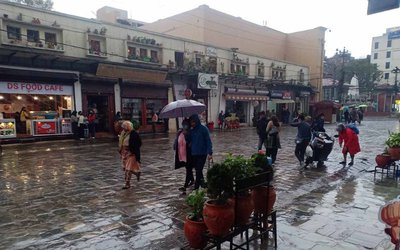We humans depend on nature and its other constituents for survival. The recent IPBSS report has put forth an alarming picture of species extinction and it is a clear indication as to what it would mean to us. This report, coming as it does after IPCC’s Special Report 1. 5 and ICIMOD’s HKH review, highlights new threats to our region. Nepal is one of the repositories of biodiversity in the world. The alarming loss of biodiversity and changing climate are threats to human survival. We are not immune or separate from global change processes.
The impact of mal practices
Our Himal, Mountains and Tarai face combined threat of climate change and mal-development. The landscape is lacerated by disruptive interventions. While the Himalayan region and mountain face increasing exploitive intervention and extreme weather pattern, the Tarai region faces stresses of the impacts that cascade from deteriorating mid-hills and Siwalik.
The stress of climate change manifested by erratic precipitation works in tandem with deteriorating natural ecosystem. Disruptive development practices have scoured hill slopes which when exposed to intense rains aggravate soil erosion, landslides and flash floods. Improper land use, inappropriate settlement expansion, deforestation, construction non-engineered and agricultural practices involving excessive use of commercial fertilizers damages the ecosystems. In many places, the balance between rainfall and landscape has been disturbed.
Consequently, the capacity of natural ecosystem to absorb environmental stresses has weakened. Even a low intensity rainfall is likely to lead to devastating floods that have higher cost to society and infrastructure. Deteriorated watershed cannot buffer abnormal rainfall. Recent floods are the combined consequences of neglected disaster risk, faulty development practise, poor governance and intense rainfall. If this nexus prevails the cost is going to increase manifold in the future.
Healthy ecosystem
Attributing floods only to excessive rainfall will prevent us from taking measures to correct human actions that add to these disasters and impair necessary actions to build resilience. Indeed, rainfall triggers flood but avoiding mal-development is equally important to minimise flood disaster risks.
Development activities should be undertaken by keeping natural ecosystem healthy so that it acts as the first line of defence against climatic hazards. When natural ecosystems are robust enough to absorb intense rainfall, buffering weather induced hazards like floods is possible. A healthy watershed may not totally avoid landslides and floods when our mountainous landscape is saturated, but if ecosystem is healthy, recovery is quicker.
As a self-rejuvenating property of the nature termed 'rapidity' takes over recovery cost in the aftermath of a disaster is lesser. These attributes help recover losses and damages by providing materials, livelihoods and ecosystem services to the affected communities. Last week’s monsoon downpour brought about 200 mm in 3 days. This amount of water would not be a nuisance if development had systematically considered disaster risk reduction.
Shift in approach
The recent windstorms, typhoons and rainfalls are indications of what the future may look like. These events seem to indicate changing weather events spawned by climate change. It is necessary to work with people to help them understand these changes and the benefits of investing in preparedness and avoid mal-development. Behavioural changes are needed so that development and livelihood practices are harmonised with nature. Such approach while minimising exposures to new hazards must also address persistent systemic vulnerability.
For addressing residual risks, preparedness is the way forward. It is less about cost than that of relief and reconstruction in the aftermath of a disaster. Unfortunately, major portion of the resources is spent in relief than activities that improve livelihood, conserve natural resources and build adapted physical infrastructure. By making disaster risk reduction an integral part of development, nature can be conserved and resilience built.
Currently disaster risk reduction and climate change adaptation actions are poorly linked. They exist in isolation. In the context of growing climatic risks, this must change if actions of risk reduction are to bring desirable results. Nepal’s national, provincial and local governments must integrate disaster risk reduction and climate change adaptation as part of a holistic development approach.
Disaster risk reduction integration can be achieved through preparedness than reactive response. The approach should involve risk sensitive livelihood practices, improved natural ecosystem use and ensure hazards safety when physical infrastructures are built. Policies must provide an overarching framework to mediate interaction among people, practices and development. By making disaster risk reduction integral part of development, nature can be conserved, and we can take a step towards sustainability.
















